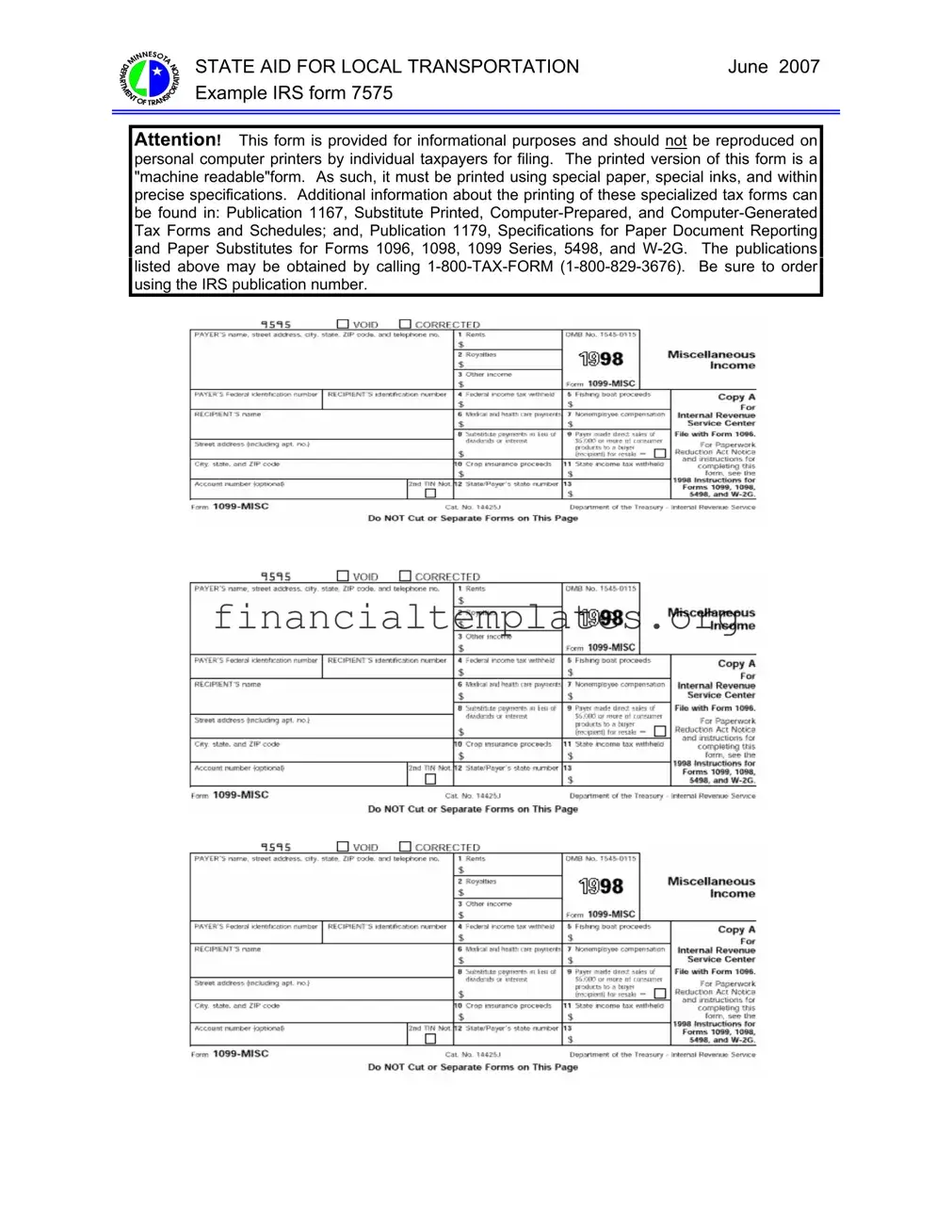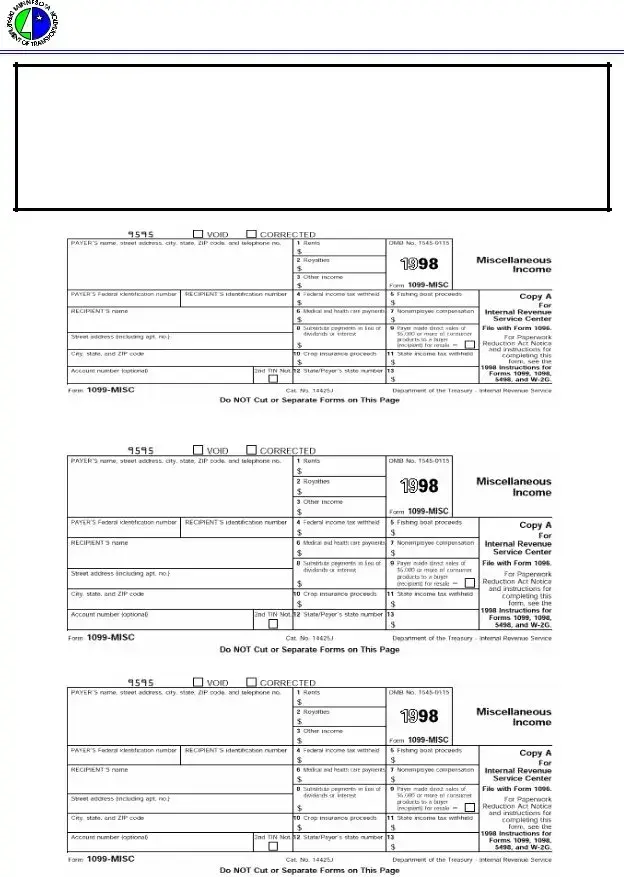The IRS Form 1099 series can be seen as a cousin to the IRS 7575 form in their shared purpose of reporting specific financial information to the federal government. Just as the 7575 form aids in the administration of state aid for local transportation, the 1099 forms cover various types of income beyond wages, such as freelancing, dividends, and interest payments. Both sets of forms are integral to ensuring accurate tax reporting and compliance, though they cater to different sectors. Importantly, like the 7575, the 1099 forms must meet strict IRS standards for their physical format, as outlined in IRS Publication 1179, which discusses the specifications for paper document reporting.
IRS Form W-2G shares a connection with Form 7575 through its role in reporting specific types of income - in this case, gambling winnings. Both forms are designed to inform the IRS about transactions that may affect an individual's or entity's tax obligations. They are part of the broader ecosystem of tax reporting that enables the accurate collection of taxes. Compliance with precise printing and submission specifications is required for both, ensuring that the IRS can efficiently process and analyze the reported data. This similarity underscores the diverse types of financial activities that must be reported to maintain financial transparency and compliance.
Form 5498, which is used for reporting contributions to individual retirement arrangements (IRAs), also shares characteristics with the IRS 7575 form. Though they serve vastly different purposes, both are crucial for accurate tax reporting and compliance. Form 5498 provides the IRS with information about retirement savings, which can affect taxpayers' deductions and tax responsibilities. Like the 7575 form, Form 5498 also has specific printing and submission requirements to ensure compatibility with IRS processing systems, as emphasized in IRS publications that guide the creation of substitute tax forms.
Publication 1167 is intrinsically linked to the IRS 7575 form, not through content, but by its focus on the production of substitute tax forms. This publication outlines the guidelines for reproducing IRS forms with computer-generated methods, ensuring they meet the strict standards necessary for machine readability. Both the 7575 form and the guidelines in Publication 1167 highlight the importance of adhering to specific technical specifications when producing tax forms to avoid processing errors and potential penalties for inaccuracies or non-compliance.
Similar to the IRS 7575 form, Publication 1179 offers detailed instructions on the specifications for paper documents and substitute forms including the 1099 series, 5498, and W-2G, among others. This publication is crucial for entities that need to create their own versions of these forms, ensuring that they are correctly formatted and can be accurately read by IRS processing equipment. Both the publication and the form emphasize the necessity of compliance with specific technical requirements to facilitate efficient tax processing and reporting.
The IRS form 1096, which serves as a summary or transmittal form for the 1099 series, 5498, and others, shares a procedural connection with the IRS 7575 form. Though the 1096 form collates information from multiple forms for submission, it complements the 7575 form's role in tax reporting by ensuring that all necessary documentation is organized and processed correctly. Together, they exemplify the varied types of documentation the IRS requires for thorough and accurate tax administration, each subject to strict guidelines for their format and submission.
Each of these forms and publications plays a unique role in the tapestry of tax administration and compliance, yet they share commonalities with the IRS 7575 form in terms of purpose, requirements, and the emphasis on precise specifications for physical documents. Understanding these connections sheds light on the broader context of tax reporting and the meticulous standards set forth by the IRS to ensure fairness, accuracy, and efficiency in tax collection and governance.

